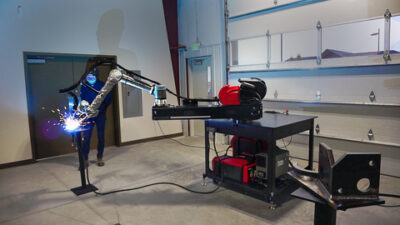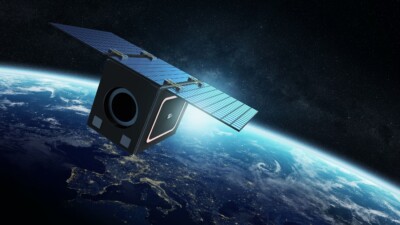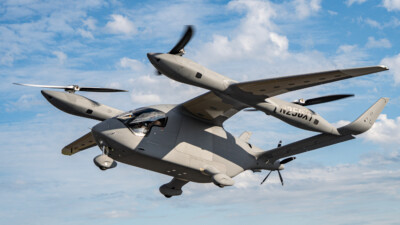What is eVTOL and what does it do?
It’s been a cliched complaint for at least a quarter of a century: Where are the flying cars?
Often cited as the emissary of The Future (along with robot butlers and meals in pill form), the notion that flying cars would become commonplace was largely dismissed by most seriously minded engineers until 2009. That was the year that a video of NASA’s Puffin concept – based on a technology dubbed ‘distributed electric propulsion’ – hit YouTube.
Since then, urban air mobility (UAM) enabled by electric vertical takeoff and landing (eVTOL) technology has gone from pie in the sky to actually in the sky, with development efforts from both legacy OEMs – including Airbus, Boeing, and Honda – as well as start-ups such as Archer Aviation, Joby Aviation, and Volocopter.
Most recently, Joby Aviation announced successful flights in Dubai and Archer Aviation announced that it had successfully completed an initial flight of its Midnight aircraft in Abu Dhabi. The locations of those test flights (both in the United Arab Emirates) is not a coincidence, and it points to the biggest hurdle facing eVTOLs today. But before we get into that, let’s take a look at what eVTOL technology is and what it’s potentially capable of.
eVTOL Technology
There are several categories of eVTOL designs. These include multirotor (essentially large drones, such as the Volocopter 2X and EHang 216), lift + cruise (with separate rotors for vertical lift and horizontal cruise, such as the Joby S4), tiltrotor and tiltwing (such as the Bell Nexus), and vectored thrust (with fixed wings and rotors, such as the Archer Maker).
Broadly speaking, eVTOL vehicles are designed to utilize vectored thrust, many with rotors or propellers oriented vertically for takeoff and landing and horizontally for cruising. This also means that, while some eVTOL aircraft incorporate tandem or box wings in their designs, most rely primarily on their rotors to generate lift. Similarly, while there are examples of eVTOL vehicles that use hydrogen fuel cells (such as the Skai from Alaka’i Technologies), most are battery powered.
Indeed, it’s the electric nature of their propulsion systems that makes eVTOL aircraft unique. After all, vertical takeoff and landing aircraft have existed since the 1960s, but compared to the complex jet engine designs of the Harrier Jump Jet and its ilk, eVTOL is significantly simpler. In theory, this should enable eVTOLs to be less expensive to manufacture and operate, as well as promoting redundancy and thereby improving their tolerance for failure and enhancing their safety.
eVTOL applications
Perhaps the most obvious (or at least the most publicized) use case for eVTOL is on-demand passenger services, aka air taxis. At one time, Uber Elevate proposed to lead the charge on this initiative, but the company’s sale of that business segment to Joby Aviation suggests that it’s grown less optimistic about the prospects for eVTOL in UAM.
Then there are the possibilities for package delivery, with Google-owned Wing, Amazon Prime Air and even UPS all competing to become the leader in this potential market. It’s worth noting, however, that this application tends to blur the line between eVTOL conceived as aircraft capable of transporting people and (relatively) more conventional autonomous drones.
Finally, and perhaps most excitingly, there is the potential to use eVTOL aircraft for public services, such as firefighting, search and rescue, and disaster relief. A 2021 NASA white paper on eVTOL technology for public services argues that these are the most promising use cases for the technology, since they tend to garner greater public support and are generally subject to fewer regulatory constraints than commercial civilian applications like air taxis or package delivery.
eVTOL challenges
The same NASA white paper that argues in favor of eVTOL for public services is also quick to point out their biggest technical challenge: energy density. According to the paper, packed Li-Ion batteries have a specific energy of 230-260 Wh/kg at the cell level and 180-200 Wh/kg at 3-6˚C discharge rate. That’s significantly lower than the hydrocarbon fuels used in conventional aircraft, which have a stored energy density of 12,000 Wh/kg.
Not only does this limit the effective range of eVOTL aircraft, it also doesn’t account for the additional weight necessary to meet the thermal management and safety requirements of electric aircraft that are approved for commercial aviation. Moreover, FAA certification requires a demonstration of recovery mechanisms in case of mechanical failure, and what that solution actually looks like in the case of eVTOL is still unclear.
That’s why – until the relatively low energy density of batteries can be addressed – eVTOL aircraft may be limited to use in countries outside the FAA’s jurisdiction.



